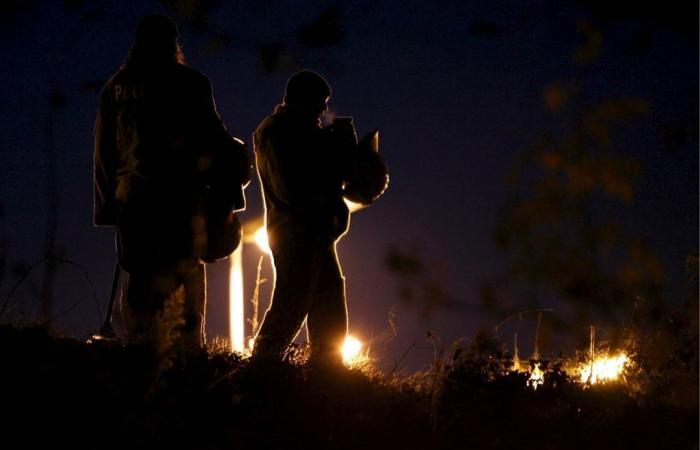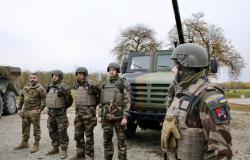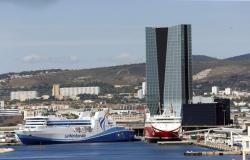
Special trains will transport four containers of highly radioactive waste from France to Philippsburg, near Karlsruhe, in the coming weeks. Anti-nuclear activists gathered this Saturday, November 9 in Germany to oppose it.
Company
From daily life to major issues, discover the subjects that make up local society, such as justice, education, health and family.
France Télévisions uses your email address to send you the “Society” newsletter. You can unsubscribe at any time via the link at the bottom of this newsletter. Our privacy policy
Will we soon see the return of the “beaver trains”? These shipments of nuclear waste transported by rail between France and Germany until the mid-2000s should temporarily return by the end of 2024. In any case, this is what was announced at the end of the summer the German Federal Office for the Safety of Nuclear Waste Management, indicating that convoys would be organized before December 31, 2024.
More precisely, these are four containers of waste, dating from before 2005 and still currently on French soil, which must be taken back by Germany in accordance with international law. According to the Anti-Atom Sudwest movement, which brings together the anti-nuclear associations of Baden Württemberg in Germany, these trains should even run more precisely between November 18 and 24.
Faced with the proximity of the deadline, anti-nuclear activists have decided to launch a series of operations to demonstrate their opposition to this operation, first this Saturday, November 9 at Karlsruhe station and the site of the former power station of Philippsburg, where the waste is supposed to arrive. “Every transport is dangerous because highly radioactive waste is handled.judge Cécile Lecomte, activist present at the demonstration. As long as we don't know what to do with waste, we will continue to move it from one country to another.“For Ines, the main thing is to find”a secure place“. “And it doesn't exist today“, she laments. Inès, Cécile and the other demonstrators then took the train to Philippsburg, the final destination of the convoys to come, where another rally was organized.
These Castor containers (English acronym for Nuclear Fuel Storage and Transport Container) will in fact be stored at the “intermediate” storage center in Philippsburg which, as its name suggests, constitutes a transitional logistics solution. It is one of 16 temporary sites where highly radioactive waste, systematically vitrified and enclosed in these containers, is stored in Germany. Where will they go next? The answer is not yet determined. Research and debates to arrive at a solution that was both scientifically viable and socially accepted were originally supposed to end in 2031. But specialists are now talking more about 2050.
German anti-nuclear activists gathered in Karlsruhe this Saturday, November 9, to oppose beaver trains.
•
© Baptiste Garguy-Chartier / France Télévisions
In any case, the coming days could give rise to a new series of anti-nuclear mobilizations. In the 1990s and 2000s, these beaver trains circulated a lot between La Hague, in Normandy, and Germany, always under imposing police escort and often slowed down by environmental demonstrations. It was a regular site of confrontation between the anti-nuclear movement and the authorities of the two countries. On November 7, 2004, Sébastien Briat, a 23-year-old environmental activist, was struck and killed by one of these trains in Meurthe-et-Moselle.





